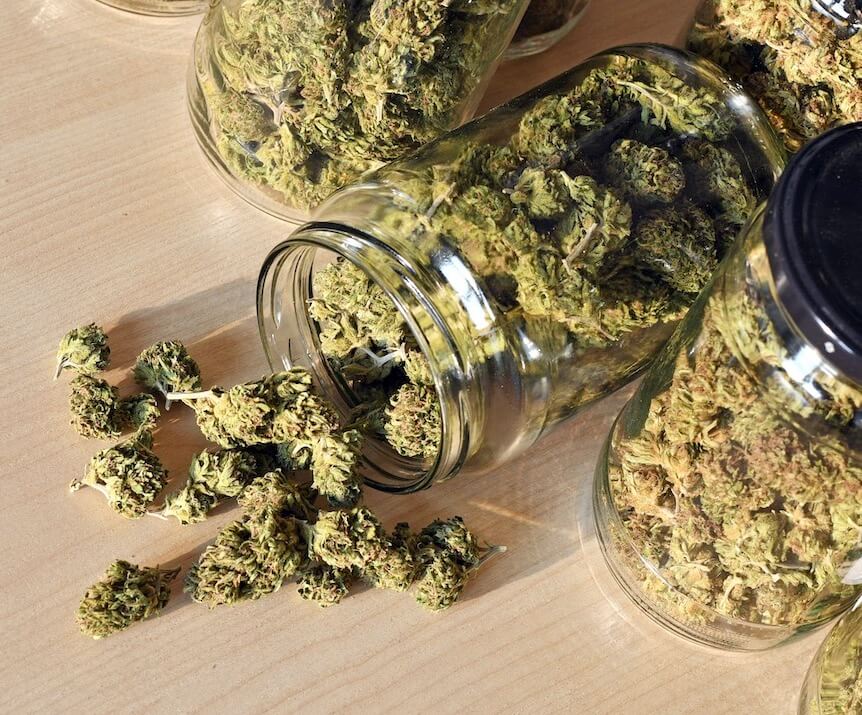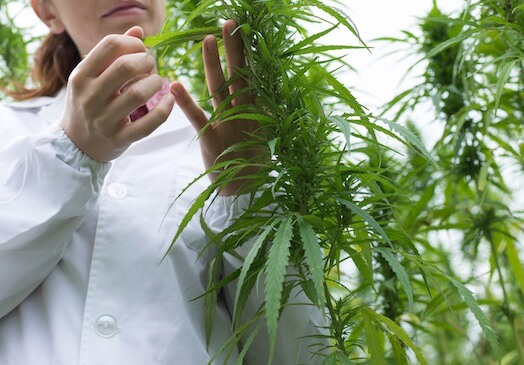Using Marijuana for Pain
 Pain is the primary complaint of most of the patients that present to the Huffman clinic. I have written about pain and the use of opioids to control pain as well as about natural ways to decrease pain through diet and exercise. One of the more frequent questions that I get asked about pain control is regarding my advice on the use of Marijuana. Unfortunately it is a complex question and to help clarify some of the issues around it I decided to dive into the topic.
Pain is the primary complaint of most of the patients that present to the Huffman clinic. I have written about pain and the use of opioids to control pain as well as about natural ways to decrease pain through diet and exercise. One of the more frequent questions that I get asked about pain control is regarding my advice on the use of Marijuana. Unfortunately it is a complex question and to help clarify some of the issues around it I decided to dive into the topic.
First, Some Disclaimers
Marijuana is not federally legal. Some states, including California, have legalized it from the perspective of state law and others have made it legal for medical use. In addition, many states have “decriminalized” it meaning that the punishments are not as severe as those related to other drugs.
It seems that the trend is toward legalization – but use, sale, and possession are still federal crimes. This was reinforced by the US Attorney General in January of 2018 with a memo instructing US Attorneys to enforce federal law relating to marijuana. This is an issue for any physician who prescribes medications, especially controlled substances because the Drug Enforcement Administration, which grants physicians the ability to write prescriptions, is a federal agency and subject to federal law. This is one of the reasons that physicians will not “prescribe” marijuana – they are afraid of losing our ability to prescribe other medications or even being charged with a federal crime.
To tell you the truth, it makes me nervous to even publicly discuss it in a blog post. To be a subject of a federal investigation, even if you are exonerated, could cost tens of thousands of dollars in legal defense and countless hours away from practice. In addition, it would not be considered a “malpractice case” so insurance would not cover the costs. Quite simply, it is a battle that physicians can’t afford to take on.
I do not partake of or promote recreational Marijuana use. I am careful with my health and Marijuana use has never been a part of it so I have no personal reason for promoting legalization. That being said, I am a believer in personal freedom and the government staying out of peoples’ business unless it impacts others – so, I also do not have a personal reason to want marijuana to remain illegal. I have no investment in marijuana related companies nor do I have a financial interest in seeing it remain illegal. Essentially, I have no personal reason to see it remain illegal or become legal. My thoughts on this are based on my observations in my medical practice and my concern for my patients.
As a physician and health advocate, I am against smoking in any form. Simply put, smoke is bad for you. Sure some smoke can be worse than other smoke, but there is no smoke that is not bad. This obviously includes cigarettes but also includes marijuana, wood smoke, cooking smoke, artificial smoke flavoring, coal smoke, auto exhaust and even candle and incense smoke. When people die in fires it is usually from smoke inhalation, not from being burned. If you choose to use marijuana, I suggest not smoking it.
Marijuana and Pain
After all those disclaimers, why am I writing about marijuana? Simply because one of the most common questions that I get asked is about using marijuana for pain. This has increased significantly in the last couple of years because of state legalization and because we have realized that the old mainstay of pain control – opioids – does not work well and may actually lead to more pain and disability. What initially surprised me about the marijuana inquiries were the actual patients that were asking. They are not the stereotypical marijuana user. The majority have been women and almost all patients have been middle aged or elderly. Sometimes they have had children or relatives suggest they ask but more frequently it is friends in their same age group. Most of the patients in this category have never used marijuana recreationally or only did so in their younger years.
 Mostly, patients want to know where they can get marijuana and how to take it. This is where the problem starts. Because marijuana remains federally illegal, there is very little research into proper dosing. Because it is poorly regulated, there is minimal testing on the actual products. Any available testing and dosing information that is generally not discussed in the traditional medical community. Basically, with all the drug references I have available, none of the standard ones include information on prescribing marijuana. For this reason patients are stuck relying on word of mouth, trial and error, and the advice of the employees at the dispensary. While an employee at a dispensary may know about their products, they are not pharmacists. They cannot tell you about possible interactions that marijuana may have with your other medications – both because they are not educated in pharmaceuticals and because the lack of research on marijuana means that the information often just does not exist.
Mostly, patients want to know where they can get marijuana and how to take it. This is where the problem starts. Because marijuana remains federally illegal, there is very little research into proper dosing. Because it is poorly regulated, there is minimal testing on the actual products. Any available testing and dosing information that is generally not discussed in the traditional medical community. Basically, with all the drug references I have available, none of the standard ones include information on prescribing marijuana. For this reason patients are stuck relying on word of mouth, trial and error, and the advice of the employees at the dispensary. While an employee at a dispensary may know about their products, they are not pharmacists. They cannot tell you about possible interactions that marijuana may have with your other medications – both because they are not educated in pharmaceuticals and because the lack of research on marijuana means that the information often just does not exist.
Now if marijuana is not that easy to get, doctors cannot really tell patients what to get or how much to take, and we don’t really know how marijuana might interact with other medications, why even consider it? Anecdotally, again without any really great studies, patients report that it works. Also it does not seem to have many of the problems that are reported with opioids. Specifically, patients do not seem to become tolerant to it requiring higher doses. Second, patients do not seem to go through severe withdraws when they stop using it. Many also report fewer side effects. Side effects of Opioids include constipation, nausea, itching, depression, hormonal abnormalities, depression, anxiety and sexual dysfunction.
That is not to say that Marijuana is side effect free. Reported side effects include dry mouth, impaired short term memory, impaired motor skills and paranoia or anxiety. There is also a suspected relationship between marijuana and the onset of psychosis. In addition, use of marijuana in adolescents is associated with a lower intelligence and cognitive function that appears to be permanent. Together, these effects seem to be related to the potency of the marijuana.
So, ultimately what is my advice?
First, be cautious. If you want to try marijuana for pain, try to find a trusted source and try to get a recommendation someone who is already using it and knows how much is effective for them. You can also go to a dispensary and ask for advice. Second, don’t smoke it. Smoking, even marijuana, is unhealthy. Based on feedback from patients, I would consider a topical preparation, or something you can eat. Third, remember marijuana is not free of side effects and is especially bad for adolescents in whom it seems to affect brain development. Fourth, advocate for more research. Marijuana legalization is becoming less and less controversial and there is mounting evidence that it helps for pain and possibly has other medical uses. Although it has dangers and side effects, based on seeing the results in my patients, I suspect that overall, it is safer that opioids for use in chronic pain. Remember, opioids are associated with tens of thousands of deaths a year in the United States. However, for as long as marijuana remains illegal under federal law, research will remain incomplete – something required in order to make educated decisions on using marijuana for pain.
Read More Blog Posts:
Request An Appointment
Address: 3273 Claremont Way, Ste. 201, Napa, CA 94558
Phone: 707-603-1042
